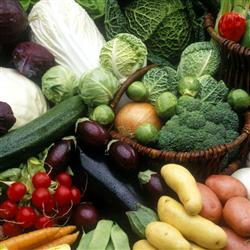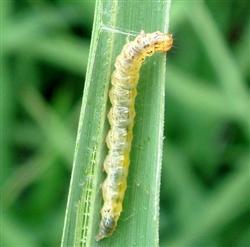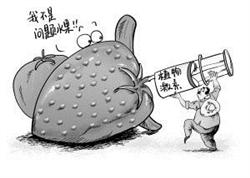How can plant growth regulators be used safely?

How can plant growth regulators be used safely? Please introduce how to use plant hormones are organic small molecular substances synthesized in plants with very little content and have significant effects on plant growth and development, also known as plant natural hormones or plant endogenous hormones. Plant hormones can be divided into corn, that is, auxin, gibberellin, cytokinin, abscisic acid, ethylene. Plant hormones play an important role in regulating plant growth and development, such as affecting plant germination, rooting, flowering differentiation, plant germination, rooting, flowering, fruiting, dormancy, shedding and so on. As most of the self-produced hormones in plants are easy to decompose, more than 95% of the hormones used in production are synthetic. These substances are called growth regulators, not only because of the production of crops, but also for postharvest ripening of fruits and vegetables. As natural plant hormone analogues, plant growth regulators are generally slightly toxic or low toxic. although they are not for the purpose of killing pests, they can only regulate plant growth and germination, and are still managed as a class of pesticides. The following mainly introduces the use of several plant growth regulators: first, 2.4.D is the abbreviation of 2.4-dichlorophenoxyacetic acid, which is low in cost and widely used. At low concentration, farmers use it to soak seeds and accelerate germination, which can improve the germination rate. Spraying in medium concentration (1-25ml / L) when oranges and pears blossom can prevent falling flowers and fruits, induce seedless fruits, and soak oranges when the oranges are ripe for preservation; at higher concentrations, they can kill a variety of broad-leaved grasses and glyphosate to increase the efficacy to kill weeds. Second, the main role of naphthylacetic acid is to stimulate growth, cuttings rooting, thinning flowers and fruits, preventing falling flowers and fruits, inducing flowering, inhibiting sprouting, promoting early maturity and increasing yield. Farmers in our town generally spray it on tomatoes and cucumbers to prevent falling flowers and promote fruit setting. More is used for cutting sweet-scented osmanthus seedlings, grape seedlings, soaking in the base of 2 cm before cutting, soaking for 2-3 hours before cutting. Some farmers use it as a rooting agent, 20% naphthalene acetic acid 2.5 grams in water 20 jin or splash root soaking to promote camphor tree, magnolia tree early growth, how long roots, improve the survival rate. Gibberellin, also known as 920, broad-spectrum plant growth regulator, can promote plant growth and development, increase yield, improve quality, promote germination, reduce fruit shedding, and increase fruit yield. The farmers in our town were the first to come into contact with 920, which was used for spraying when heading and flowering, which could complete the ears within two or three days and reduce the harm caused by the "cold dew wind", but if the concentration was too high, it could increase the Internode and easily produce lodging, and then gradually changed to use safer grouting fertilizer, grain satiety, etc., which contains a small amount of 920 and potassium dihydrogen phosphate and other fertilizers, which can also make the seedlings heading neatly and improve the seed setting rate. Ethephon, a synthetic, low-toxic plant growth regulator, works by releasing ethylene. Ethephon can promote fruits and vegetables, early coloring and ripening, storage and fresh-keeping, de-astringent, but also can adjust flowering, promote early coloring and ripening of melons and vegetables, shorten crop growth period and increase yield. Some farmers in our town use it to spray on melons and tomatoes, as well as on fruit trees, such as oranges. During the citrus color conversion period, about 150 mg / kg ethephon is sprayed to the canopy, which can make the oranges ripen 2 weeks earlier. Ethephon has strong physiological activity and should not be used indiscriminately to avoid drug damage. 5. Clopirazide, as a swelling agent, is often used in melons, vegetables and fruit merchants. It has the strongest activity and can accelerate cell division, promote cell growth and differentiation, and prevent falling flowers and fruits. Farmers in our town are often used to spray on watermelons, cucumbers, oranges and grapes. Spray 1-2 times before and after flowering, which can be put on the market early and increase yield. Tianfengsu, which is broadcast on rural channels in recent years, is also a plant regulator. Its main ingredient is brassinolide, which can soak seeds. Spraying in January in rice seedling and tillering stage, heading stage, flowering stage and filling stage can lead to early heading, increase seed setting rate, increase 1000-grain weight, increase yield, make rice mature 4-7 days earlier, reduce the harm caused by "cold dew wind", and can also be sprayed on vegetables. Vegetables can be put on the market a week earlier. Although the toxicity of plant growth regulator is low, it is a pesticide after all, and the harm caused by overuse occurs from time to time, such as Jiangsu "watermelon split melon", cucumber and towel gourd grow thicker and longer in the refrigerator, etc., we should try our best to reduce the residue and choose the plant growth regulator with fast decomposition and short residual period. plant growth regulators with low toxicity. Under the premise of the same effect, regulators with short residual period and low toxicity, such as seedling dwarf, can be used instead of paclobutrazol. The two physiological functions are the same, but uniconazole has high activity, short residual period and safety. Secondly, it is necessary to master the correct concentration, frequency and period of use. Third, to improve the efficacy and reduce the dosage, we should maximize the role of regulators, greatly improve the yield and quality of crops, and ensure the quality and safety of agricultural products. Click to get more regulator use technology click to get more pesticide use technology
- Prev

What pesticides are effective against rice leaf roller?
What pesticides are effective against rice leaf roller? Please introduce the rice leaf roller, also known as rice leaf roller, commonly known as scraping green worm, white leaf worm, leafworm, etc., which are the main pests in the growing period of rice. The pest harms rice with larvae, affixes leaves into longitudinal buds, hides and gnaws on upper epidermis and mesophyll.
- Next

What is the difference between plant growth regulators and plant hormones?
What is the difference between plant growth regulators and plant hormones? Please introduce the concepts of plant growth regulators and plant hormones that are often confused. Plant hormone, generally refers to the plant endogenous hormone, is the product of plant normal metabolism, can move from the synthetic site to the action site, regulate the plant itself.
Related
- Fuxing push coffee new agricultural production and marketing class: lack of small-scale processing plants
- Jujube rice field leisure farm deep ploughing Yilan for five years to create a space for organic food and play
- Nongyu Farm-A trial of organic papaya for brave women with advanced technology
- Four points for attention in the prevention and control of diseases and insect pests of edible fungi
- How to add nutrient solution to Edible Fungi
- Is there any good way to control edible fungus mites?
- Open Inoculation Technology of Edible Fungi
- Is there any clever way to use fertilizer for edible fungus in winter?
- What agents are used to kill the pathogens of edible fungi in the mushroom shed?
- Rapid drying of Edible Fungi

